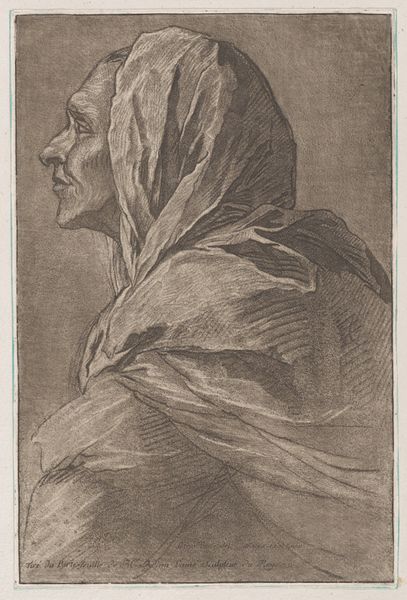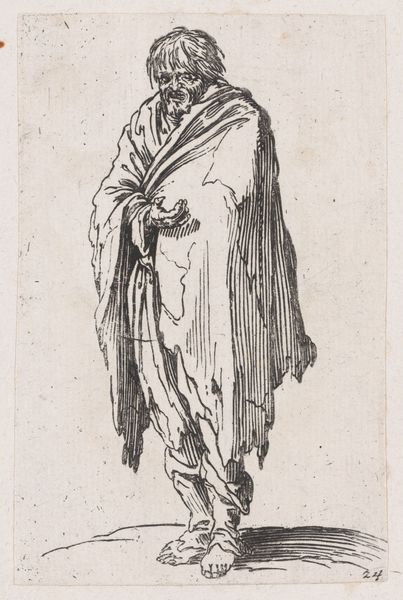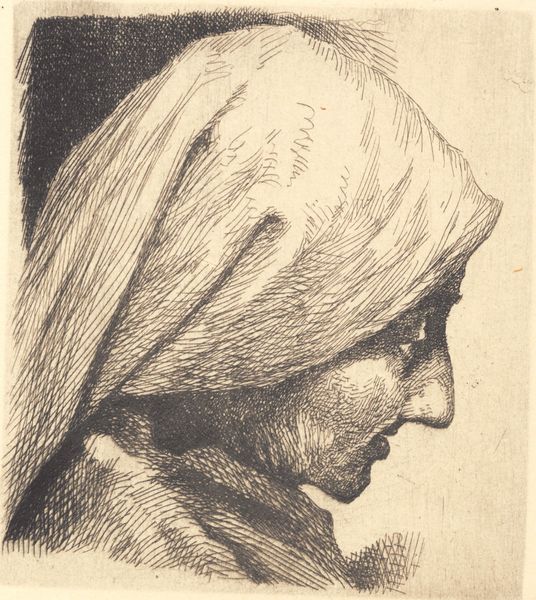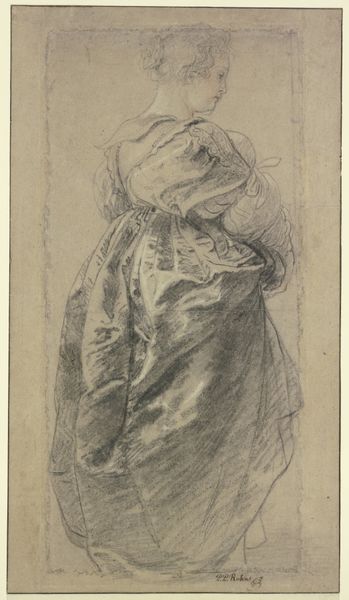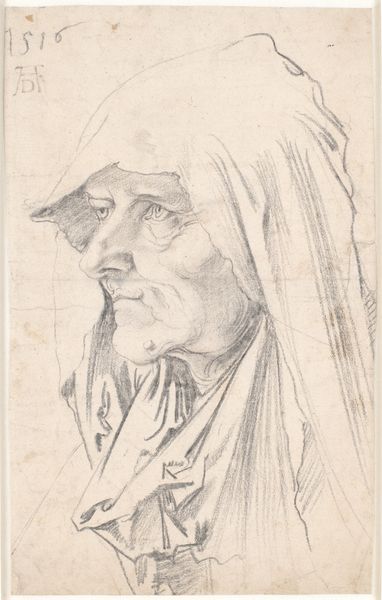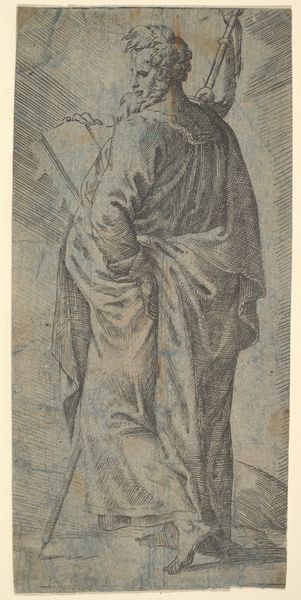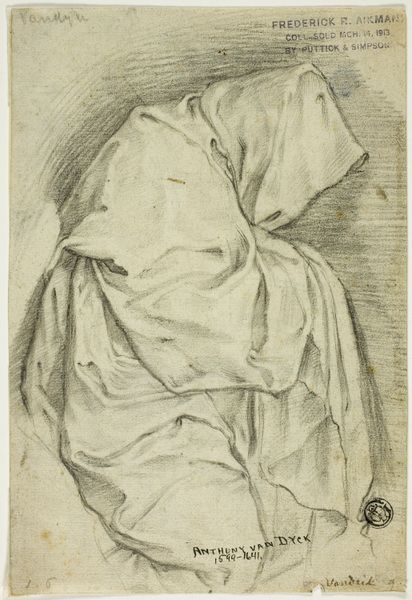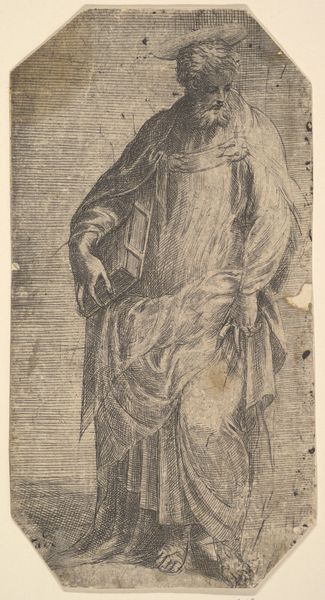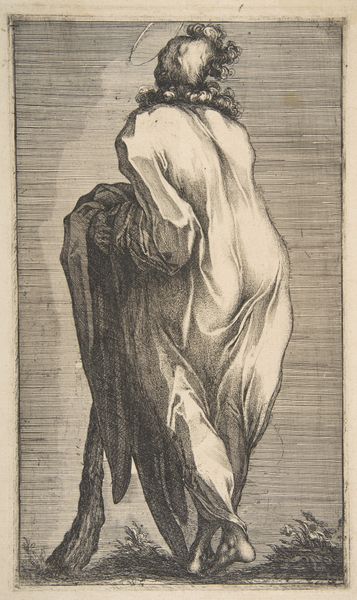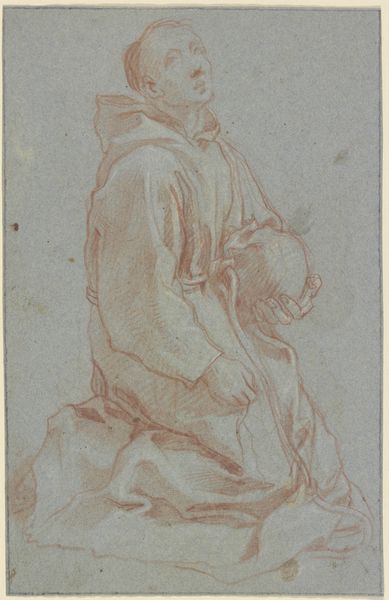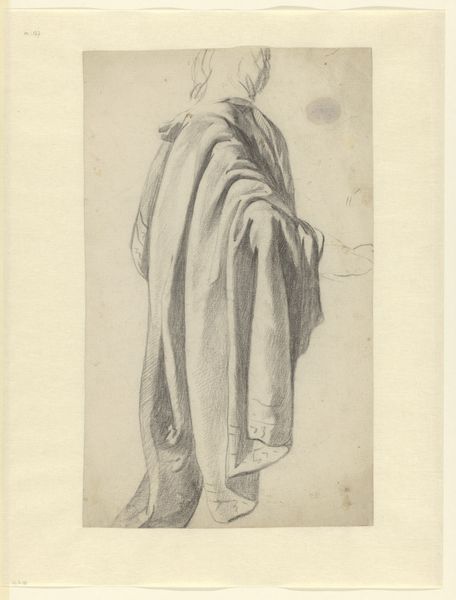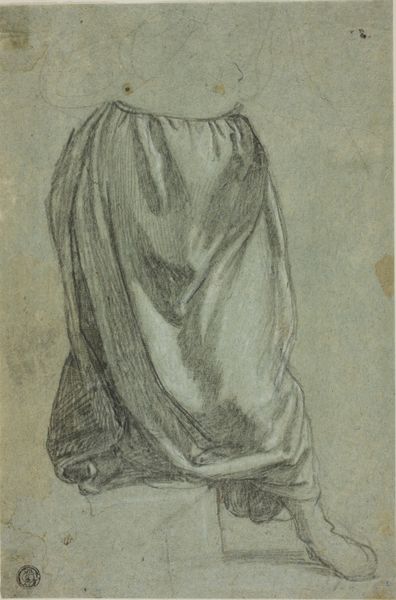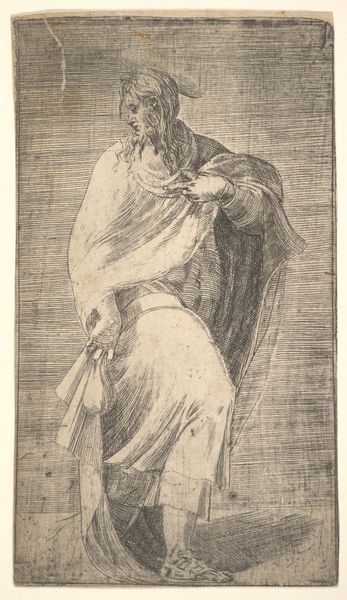
drawing, print, etching
#
portrait
#
drawing
#
baroque
# print
#
etching
#
pencil drawing
#
portrait drawing
Dimensions: Sheet: 12 1/16 × 8 1/16 in. (30.6 × 20.4 cm)
Copyright: Public Domain
Curator: Before us is "Head of a Woman," an etching by Pietro Testa, created sometime between 1753 and 1763. It currently resides at the Metropolitan Museum of Art. Editor: Immediately, I'm struck by the crosshatching and layering of the lines in the woman’s face, but especially on that draped textile that frames her face. The sheer volume of line work hints at an investment of manual labor, the sheer patience required… I wonder, what was Testa trying to express with all that obsessive material practice? Curator: The density of the lines creates a dramatic chiaroscuro, wouldn't you say? Observe how Testa employs hatching to model the face, creating depth and volume. And notice the stark contrast between the lit and shadowed areas; the woman’s wrinkles, deeply lined in dark etching, speak volumes. Editor: Right, so much effort and focus goes into highlighting these aspects, and what gets depicted? A poor older woman—it makes me consider what the access was like to art-making at this time and why. To depict this subject took material, tools, training. How could folks outside a privileged orbit even begin to think of expressing themselves creatively when their labor and materials went entirely toward surviving under a brutal system? Curator: Let's focus for a moment on the visual elements themselves. The artist skillfully utilizes the etching medium to depict both the physical form and emotional state. Her gaze and that cloth… that draped material that softly frames her, all guide the eye across the plane of the composition in a sophisticated dance. Editor: Of course, even the means of production would suggest limitations, even an absence of artistic exploration amongst those with their faces pressed daily under those artistic and societal conditions. Even the final work becomes a historical material… a document of how socioeconomic disparities are represented within Baroque art itself. Curator: Interesting insights. Considering the totality, this portrait evokes a feeling of poignant melancholy, or perhaps a quiet resilience. It's truly moving. Editor: I see a life etched into her face, and even in the creation of the work. A life made from struggle depicted using more work! Thinking about that connection is what interests me most.
Comments
No comments
Be the first to comment and join the conversation on the ultimate creative platform.
